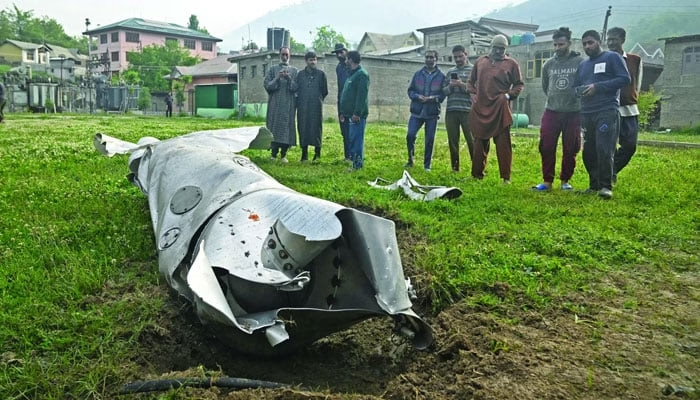In the aftermath of heightened tensions between India and Pakistan, fresh reports have emerged detailing the downing of multiple Indian Air Force (IAF) aircraft by the Pakistan Air Force (PAF) in what is being described as one of the most decisive aerial confrontations in recent years.
Security sources have confirmed that five Indian fighter jets were shot down, including three advanced Rafale aircraft, during Operation Bunyan Marsus, a retaliatory strike carried out by Pakistan on May 10. The operation marked a significant military response by Islamabad following what it termed as Indian aggression in recent days.
Crash Sites and Pilot Casualties Reported
According to field intelligence, the Indian fighter jets went down in various parts of Indian-occupied Kashmir and other regions, with several pilots either injured, missing, or feared dead.
- One IAF jet reportedly crashed in the Anantnag district, specifically in the Gadol Kokarnag area, where an ejection seat was recovered, suggesting the pilot may have ejected but possibly did not survive.
- Another crash occurred in the Pulwama or Pampore area, and sources state that the injured pilots from this aircraft were rushed to a hospital in Srinagar in critical condition.
- A third aircraft crashed in Panthial or Ramso, located in Ramban district, where both the pilot and flying officer were evacuated to the Army Hospital in Udhampur with serious injuries.
- In the Akhnoor region’s Bharda Kalan Tehsil, an Indian jet went down in open fields. Both pilots successfully ejected but were badly injured and later shifted to the military hospital in Akhnoor.
- A fifth crash was reported in the Bathinda region, though details regarding the aircraft type and pilot status remain limited.
These losses came as part of Pakistan’s coordinated aerial retaliation, which also crippled the Indian air defense systems, signaling a significant military and symbolic victory for the Pakistan Air Force.
India Indirectly Admits Rafale Losses
Initially, Indian authorities only confirmed the downing of three aircraft, attempting to downplay the impact. However, new developments suggest that the IAF has now indirectly acknowledged that three Rafale jets were among those lost, a revelation that undermines earlier official statements.
This marks the first time India has tacitly admitted to such a loss, particularly of its French-made Rafale jets, which were projected as a game-changer in South Asia’s air power dynamics.
A Clean Sweep: Pakistan’s “6-0” Victory in the Skies
Air Vice Marshal Aurangzeb Ahmed of the Pakistan Air Force described the aerial encounter as a “6-0” victory in favor of Pakistan, highlighting the operational superiority and preparedness of the PAF.
In an exclusive statement, Air Marshal (retd) Arshad Malik also disclosed previously unreleased information regarding the extent of damage inflicted on Indian forces. “The Pakistan Air Force responded swiftly, effectively, and surgically,” he noted, adding that the results speak for themselves.
The coordinated nature of the strikes, the choice of military targets, and the strategic planning behind Operation Bunyan Marsus reflect a calculated military doctrine by Pakistan that aims to maintain deterrence while avoiding civilian casualties.
Regional Fallout and Strategic Implications
The success of the PAF’s operation not only dealt a psychological blow to the Indian military but also raised serious questions about the efficacy of India’s defense infrastructure and intelligence capabilities. Analysts suggest that this confrontation could reshape future military planning and procurement strategies in the region.
With international observers closely monitoring the developments, the situation has sparked calls for restraint and dialogue. However, the recent air clash has undoubtedly tilted public and strategic sentiment in favor of the PAF, with many lauding it as a textbook case of aerial defense and retaliation.
While the dust settles over the skies of Kashmir and beyond, one thing remains certain: the Pakistan Air Force’s resounding response has redefined the military balance in a region long marred by hostility and mistrust.
As diplomatic channels now work to uphold the US-brokered ceasefire, this latest chapter in Indo-Pakistani military tensions serves as a grim reminder of how quickly geopolitical flashpoints can erupt into full-scale confrontations—only to be quelled by decisive action and international mediation.



